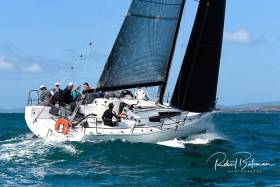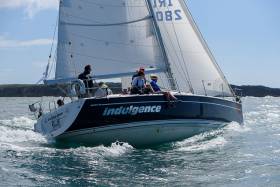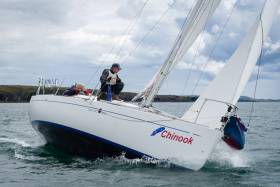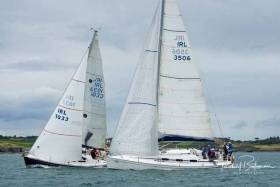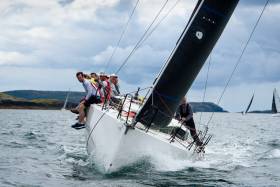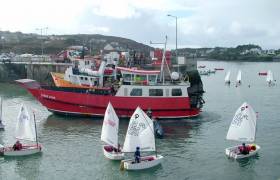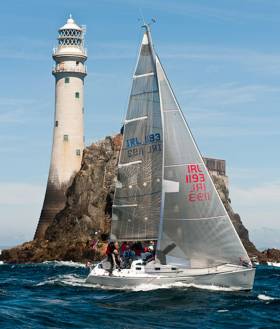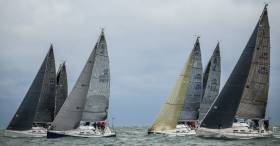Displaying items by tag: Calves Week
Calves Week Will Celebrate Sailing Enchantment of West Cork
West Cork, Ireland's own Lotus Land, should be designated a licensed substance writes W M Nixon. A licensed substance with a proper scientific code, to be administered only by highly-trained professionals. People in white coats. In a clinical setting. For West Cork is as much an induced state of mind as it is a place.
Geographically, it may be defined as somewhere down the road beyond Bandon or thought of as the coastline westward of the Old Head of Kinsale. Others insist it only really begins at Galley Head or even at the Stags. But either way, that's only West Cork as seen on maps or charts. Once you've inhaled it and lived it, it's in the mind and stays there – it's with you wherever you go.
It's a narcotic. A place beyond reality. An other-worldly coastline where the Fastnet Rock might be just another item of the furniture were it an ordinary rock, but that's to underestimate the mythos of the Fastnet Rock. Even when the Fastnet is seen every day, you don't take it for granted. Every time, it's as sacred and as special and as startling as Skellig Michael.
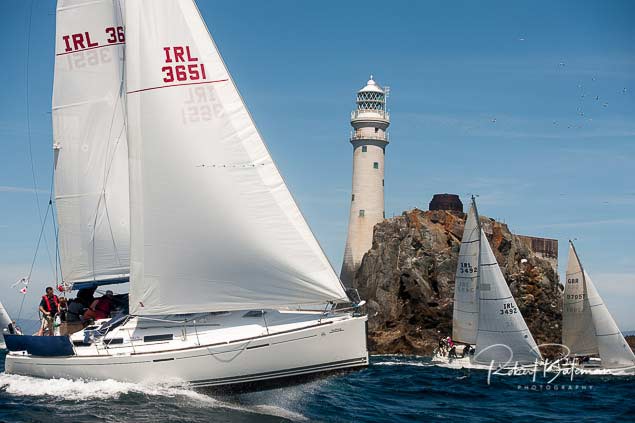 Thursday's race will be round the Fastnet Rock, eternal symbol of West Cork. Photo: Robert Bateman
Thursday's race will be round the Fastnet Rock, eternal symbol of West Cork. Photo: Robert Bateman
As for the coastline off which it is set, it's just glorious in its scenery and variety and selection of hospitable harbours. And they've crazy names to go with it. After all, when you think of it, who would knowingly select "Skibbereen" for the name of the main town? Crookhaven? No comment. And who, other than an author of works of absurd Paddywhackery, would choose "Ballydehob" as the name for a classic boat-building, culinary and cultural hotspot, yet it seems normal in West Cork.
As for one of the trendiest places on the entire seaboard, it's called Schull. But in times past, careless cartographers have now and again rendered it as Skull. No matter. As of yesterday evening, Schull's population was in the process of trebling as the August holidays arrived upon us. And if at times its ever-so-clever summer re-titling as Dublin 32 tries to take hold, rest assured that with the full West Cork treatment, everyone is a Schull sailor as the annual four-day GAS Calves Week gets underway next Tuesday.
For people from the other side of the planet, the word is the Calves are a trio of islands between Schull and Baltimore, out towards Cape Clear off Roaringwater Bay, which is so named because the Roaringwater River runs into a corner of it - the place itself has many areas of serene sea. Whatever the names, it's a great place to sail, and when they were trying to rationalise the traditional local pattern of local annual regattas in early August, the idea of a more compact basically Schull-based Calves Week for cruiser-racers came up.
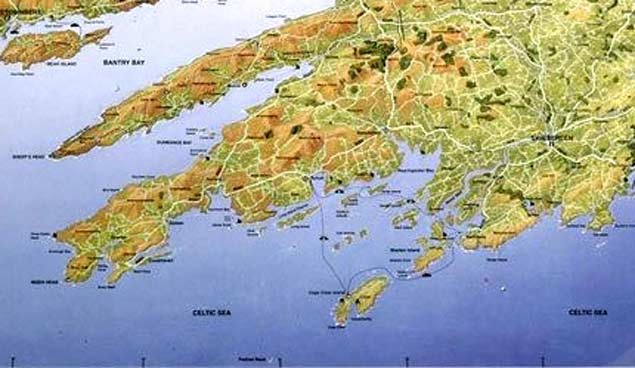 Schull at the hub of the West Cork universe
Schull at the hub of the West Cork universe
Needless to say, those of us who had cherished the old West Cork Regattas in their original slightly anarchic form resisted the new name. After all, we have the fondest memories of great happenings in the vaguely eight-day programme of the old days, such as the extra-long week that included Schull Centenary Regatta of 1984.
That particular race looked like petering out entirely because of the onset of total calm when the leading boat on the water was the great Ron Holland-designed Imp, owned at that stage of her colourful career by Michael O'Leary of Dublin Bay. But this was the Centenary Regatta. A result was urgently needed. So the Race Committee simply moved the finish line to where Imp was sitting stopped, fired a finishing gun, and allocated places to the rest of the fleet accordingly. We had a result.
 Schull Harbour in the summertime
Schull Harbour in the summertime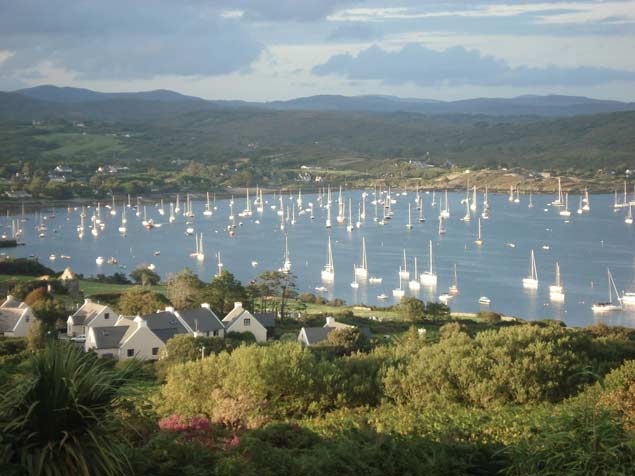 The fleet's in – Schull Harbour in Calves Week
The fleet's in – Schull Harbour in Calves Week
But times have changed. People prefer their sailing in manageable and digestible chunks, "Calves Week" is a handy brand name which is now well established. And who knows, but with the way the world is these days, Calves Week might still be going strong when Cowes and its Week is one with Nineveh and Tyre.
The fact that it's just a four day Week is something else which everyone takes comfortably in their stride, for four days of racing on the trot should be quite enough for anyone. The rest of the week's holiday can be given over to family and relaxation. Let us be clear, however, that when the racing is underway, it's quietly serious. Not gloomy, we hasten to add. But serious as in determined and competitive. For, in the end, quietly serious and determined racing is actually much more fun that so-called fun racing.
 With a large visiting fleet, the locals get their act together – this is SHSC's Michael Murphy with his Moody 30 Shelly D (left) getting to grips with the Oyster 26 Witchcraft owned by Simon Nelson of Fastnet Marine Centre. Photo: Robert Bateman
With a large visiting fleet, the locals get their act together – this is SHSC's Michael Murphy with his Moody 30 Shelly D (left) getting to grips with the Oyster 26 Witchcraft owned by Simon Nelson of Fastnet Marine Centre. Photo: Robert Bateman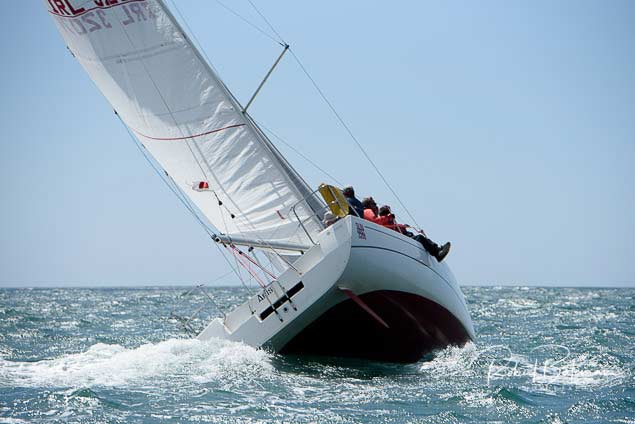 The wonders of what you can do with twin rudders – Dennis O'Sullivan (SHSC) tracking on with Aris. Photo: Robert Bateman
The wonders of what you can do with twin rudders – Dennis O'Sullivan (SHSC) tracking on with Aris. Photo: Robert Bateman
So the hosting Schull Harbour Sailing Club under Commodore Frank O'Hara have secured – for the first time – the services of renowned race Officer Alan Crosbie of Kinsale and his team, and the compact programme will test everyone's mettle within civilised limits. The fleet, which could well get up to the eighty mark with summer returning and a relaxed attitude to late entries now that everyone is in town, is to be divided into six classes today, viz Class 0/1, Class 2, Class 3, Class 4, White Sail 1 and White Sail 2.
The starts are at an easily-reached line within Schull Harbour mouth or at Copper Point, and while the starting sequence gets underway each day at a civilised time around noon, the programme rings the changes thanks to the varieties of courses, which the selection of islands combined with judiciously-place race marks can offer.
There are also acknowledgements to the regattas of yore. In times past in the old West Cork regatta series, the Wednesday saw Cape Clear regatta at which everyone won a prize – including boats, it emerged, which had not even put to sea from that quirky island's harbour. But eventually Cape Clear Regatta faded, yet the fondest memories have lingered, and this year's Wednesday's racing (August 8th) will finish off North Harbour, Cape Clear, where the recently much-upgraded harbour should be better able to cope with fleet numbers, and some hope to give it a larger role in future Calves Weeks.
 The new pontoon at Cape Clear is now in its first season
The new pontoon at Cape Clear is now in its first season
Thursday also sees a very significant nod to the past with the annual race round the Fastnet Rock, starting and finishing in Schull. It's always magic, and after seeing the effect of the all-fleet-shared start of the Harbour Race at Volvo Cork Week at mid-July, there's a suggestion that the Calves Week Fastnet Race of Thursday, August 9th might see something similar.
Throughout all this, competition will be building as fleet leaders begin to emerge, and Friday's concluding around the islands and marks race will see the heat building to the final result in an interesting fleet which includes many of Ireland's top boats.
 Paul O'Higgins' Rockabill VI (RIYC), seen here running seawards with Mount Gabriel in the background, is making her third annual appearance at Calves Week. Photo: Robert Bateman
Paul O'Higgins' Rockabill VI (RIYC), seen here running seawards with Mount Gabriel in the background, is making her third annual appearance at Calves Week. Photo: Robert Bateman
Defending overall champion is Paul O'Higgins' JPK 10.80 Rockabill VI from the Royal Irish YC in Dun Laoghaire, which had a great year in 2017, with the overall win in the Dun Laoghaire-Dingle Race under her belt before she scored in style at Schull. This year her fortunes have been more mixed. But when she leapt to centre stage last weekend to win the stormy ISORA Race and put herself right in the frame in the ISORA Points Championship 2018, any suggestion that she might forego Calves Week in order to amass further points in the ISORA Race of August 11th were dismissed out of hand – the August holiday at the family place in Schull with a family-and-friends-raced Calves Week is central to the Higgins way of life, and the ISORA Championship can wait until the James C Eadie Cup Race on September 8th.
At the sharp end of the fleet, Rockabill VI finds herself in company with Conor Phelan's Ker 36 Jump Juice from Crosshaven, which doesn't seem to have stopped moving between major regattas since turning up at the Scottish Series in May. And with the amalgamation of classes 0 and 1, they should find themselves shaping up to Frank Whelan's all-conquering Grand Soleil 44 Eleuthera from Greystones, one of the most interesting and attractive boats in the current Irish scene, as any follower of Afloat.ie will know.
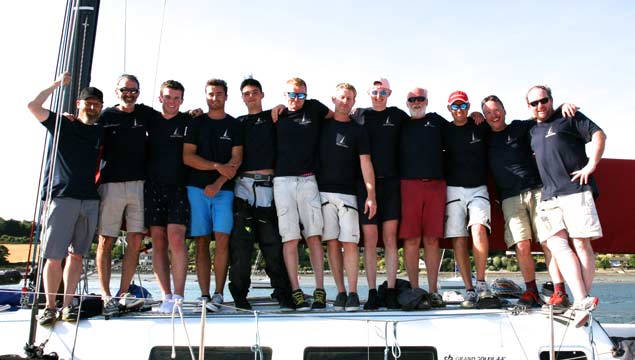 All the usual suspects….Eleuthera's crew, Frank Whelan fourth from right.
All the usual suspects….Eleuthera's crew, Frank Whelan fourth from right.
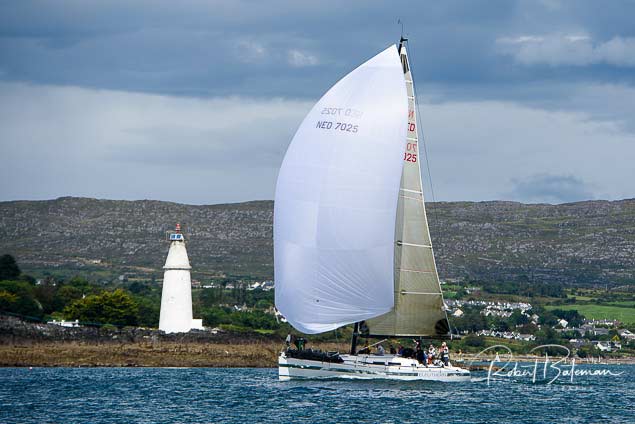 Still in the wrappings. An apparently white Eleuthera makes her Irish debut at Calves Week 2017. But it seems that the white topsides were only carefully-applied plastic sheeting, and now it has been removed to reveal her true midnight blue identity (below). Photos: Robert Bateman and David O'Brien/Afloat.ie
Still in the wrappings. An apparently white Eleuthera makes her Irish debut at Calves Week 2017. But it seems that the white topsides were only carefully-applied plastic sheeting, and now it has been removed to reveal her true midnight blue identity (below). Photos: Robert Bateman and David O'Brien/Afloat.ie
A Judel/Vrolik design of 2002, she still looks as fresh as tomorrow, and when she made her debut in Ireland exactly a year ago at Calves Week, despite being already 15 years old, she still wasn't out of the wrappers. The French owner from whom Frank bought her had wanted a white boat. But instead of a re-spray job, he's had her coated in a dense white plastic sheet, and when that was removed last winter, there was Eleuthera as good as new again in her midnight blue livery, a potent machine which is a delight to sail.
Another boat with an interesting history making the Schull scene is a case of local-boy-made-good. Dermot Cronin first made an impression on Irish sailing in Schull, but his burgeoning career took him to Dublin, and for years he has been associated with sailing successfully at home and abroad under Malahide YC colours. The most notable achievement was when he and his son Paddy won the Two-Handed Division in the Rolex Middle Sea Race of 2015 with their First 40.7 Encore. So when the likes of Eleuthera, Encore, Jump Juice and Rockabill VI line up in Schull next week, the impression that this is a fleet for serious consideration is right on target.
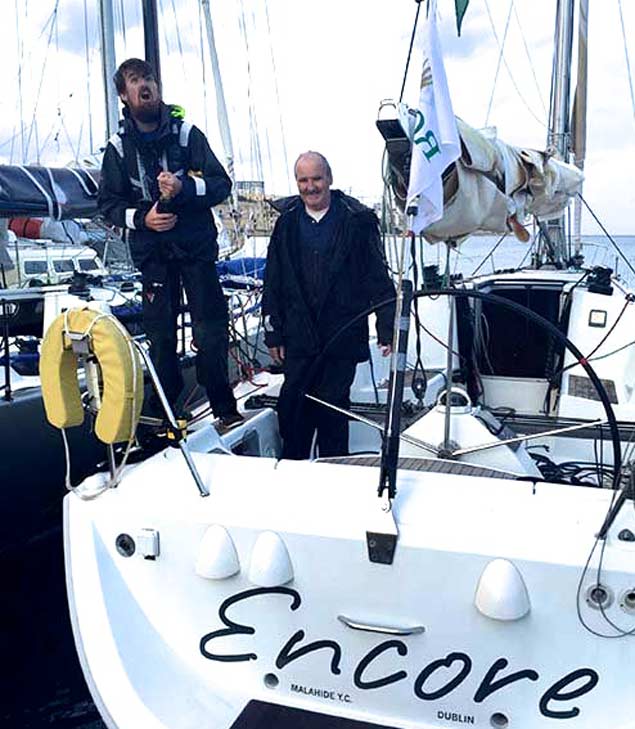 Paddy and Dermot Cronin after winning the Two-Handed Division in the Rolex Middles Sea Race 2015 with their First 40.7 Encore, which they'll be racing in Calves Week 2018
Paddy and Dermot Cronin after winning the Two-Handed Division in the Rolex Middles Sea Race 2015 with their First 40.7 Encore, which they'll be racing in Calves Week 2018
It will, of course, include at least two J/109s in the form of DBSC Commodore Chris Moore and partners' Powder Monkey, and the Jones family of Crosshaven's Jelly Baby. There's a historical gem in the form of the 1996-vintage Mills 36 Raptor, originally built as Aztec by David Harte (now very much of Schull himself) working with Garrett Connolly for Peter Beamish, but now raced by Denis Hewitt and partners from the Royal Irish YC, and fresh from the overall win in the Coastal Class in Volvo Cork Week.
Another historically-interesting entry is the 1978-designed Olson 30 Coracle VI (Kieran Collins), a modified Californian sledge design which, despite being mainly designed for Pacific Ocean offwind speed, is a remarkably good all-rounder which usually manages to be in the frame even in IRC racing.
 West coast visitor – Robert Allen's Corby 25 Smile from Galway Bay racing at Calves Week. Photo: Robert Bateman
West coast visitor – Robert Allen's Corby 25 Smile from Galway Bay racing at Calves Week. Photo: Robert Bateman
Also in the picture is a visitor from Foynes on the Shannon, Derek and Conor Dillon's Dehler 34 Big Deal, which had the kind of Round Ireland Race 2018 you would dream of. Having been at mid-fleet for much of the race, from north Donegal onwards they seldom put a foot wrong in taking full advantage of locally favourable conditions, zooming up the rankings to take fourth overall and win the Two-Handed Division going away.
But while race-oriented boats with an established track record will inevitably take attention, the bulk of the fleet will be family cruiser-racers which have tidied themselves up for race-tuning and will be giving of their sporting best during the day while keeping some energy in reserve for the social whirl ashore.
As ever, there are times when it will be crowded in Schull's colourful village. Even though the new landing pontoon immediately north of the pier wasn't due for official opening until yesterday, through this past week, it has already been well used, and one evening our eagle-eyed observer counted no less than 61 (that's sixty-one) RIBs and inflatable tenders secured to it one way or another.
There are times when Schull's bustling little main street seems every bit as crowded. Yet the contrast with the fresh and colourful scene out at sea during the day, with flocks of racing sails coming and going on blue seas between islands and shore, is all part of what Calves Week is about. It's very much an essential part of the fabric of our annual sailing programme. And always, near or far, dim in haze or bright in the sunshine, there is the eternal Fastnet Rock – unmistakable, mysterious, iconic, the very symbol and spirit of West Cork.
 The eternal Fastnet Rock, symbol and spirit of West Cork. Photo: Robert Bateman
The eternal Fastnet Rock, symbol and spirit of West Cork. Photo: Robert Bateman
Calves Week Regatta Shapes Up In Style With Over 60 Entries
With over 60 confirmed entries at present, the 2018 Calves Week organised by Schull Harbour Sailing Club from August 7th- 10th, is again shaping up to provide competitive and exciting racing for the annual West Cork festival of sailing writes Bob Bateman.
The week will see principle sponsor Frank Whelan of Gas Analysis Services hoping to continue his winning streak on his Grand Soleil “Eleuthera”, when he will again go head to head with Conor Phelan's “Jump Juice “in class one.
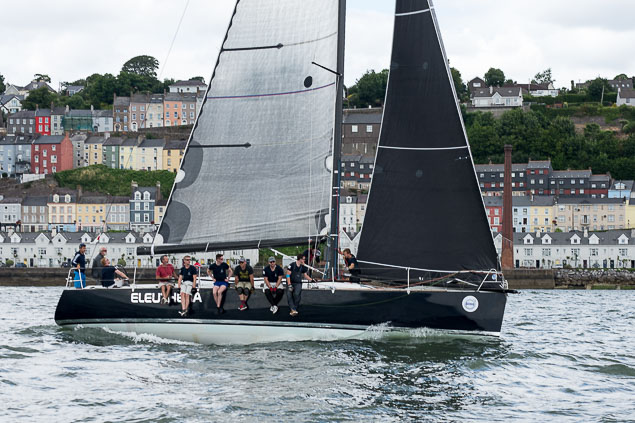 Eleuthera comes to Calves Week on the back of Cork Week success Photo: Bob Bateman
Eleuthera comes to Calves Week on the back of Cork Week success Photo: Bob Bateman
This year’s event incorporates a race in the SCORA offshore series and will feature racing for six classes, with new principal race officer Alan Crosbie promising a variety of laid Buoy’s and the natural marks of Roaring water bay.
"This year’s event incorporates a race in the SCORA offshore series"
The traditional overnight, SCORA race, starts from Crosshaven on Friday night August 3rd at 19.00 Hours. On Monday, the Baltimore regatta race will provide ample opportunity for skippers and crews to familiarise themselves with Carbery’s Hundred Isles.
The opening reception and registration take place from 17.30 hours at the Fastnet Marine Centre on Monday, August 6th. The first “round the islands” race fleet starts at 11.55 on Tuesday and on Wednesday the fleets will sail a variety of courses in Long Island Bay. Thursday will see the combined fleets head for the Fastnet Rock, with the smaller boats starting first.
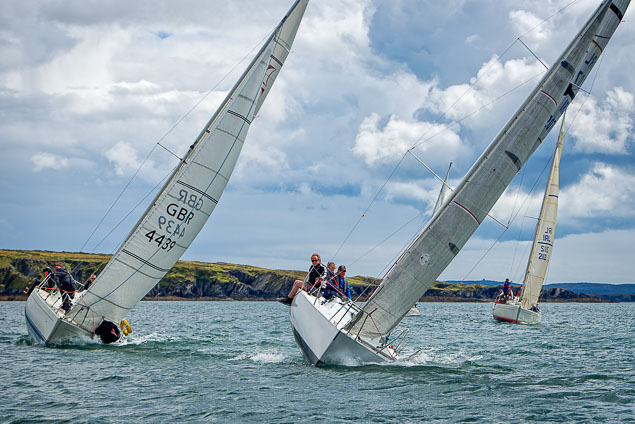 Racing at Calves Week in 2017 Photo: Bob Bateman
Racing at Calves Week in 2017 Photo: Bob Bateman
The series finishes on Friday with racing in Roaring Water Bay, followed by the overall presentation of prizes and closing ceremony on Schull Main Street.
Local racing on Saturday continues with Crookhaven Regatta, and for those with still some stamina left, Schull Regatta Committee finishes off the week in style with an all in Cruiser race and an impressive display of shoreside activities on Sunday.
Calves Week 2017 Regatta Ends on a High Despite the Fog
Friday morning in Schull must have turned into a nightmare for Calves Week Race Officer Neill Prenderville, when he awoke to find the West Cork venue covered in fog and a forecast for further wind and rain. Competitors had previously been advised of the possibility, that not all classes would be sent on a course around the Fastnet, and eventually only class 0/1 were dispatched in search of the famous rock, with the remaining fleets sailing within the confines of Roaring Water Bay in a freshening westerly breeze.
In class 1 IRC it was business as usual for Paul O'Higgins leading “Rockabill V1 around the rock, to score his fourth bullet of the series, while in Echo 1 Gabby Hogan’s local boat “Growler” finished a brilliant week with his third win in a row to take the overall Echo award, together with the best local boat trophy.
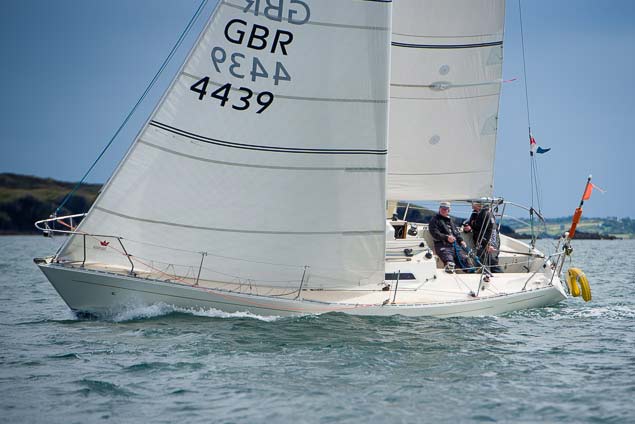 Muskateer (Billy Burke) from Cove Sailing Club competing at Calves Week Photo: Bob Bateman
Muskateer (Billy Burke) from Cove Sailing Club competing at Calves Week Photo: Bob Bateman
In class 2 IRC “the “Bad Company crew from the Royal Cork completed a fantastic week to score their third win of the week, which guaranteed their capture of the overall trophy, while in Echo their club compatriot Fergus Coughlan in “Jedi” was able to discard a poor final days result to secure the coveted overall silver ware.
In class 3 IRC Dan O Donovan from Dungarvan Harbour Sailing Club, sailing his Sonar which was probably the smallest boat of the total Calves week fleet won the overall by virtue of a better last race result, while in Echo the “Muskateer” crew from Cobh SC made up for that disappointment by claiming the Echo class overall, despite a poor Last race result.
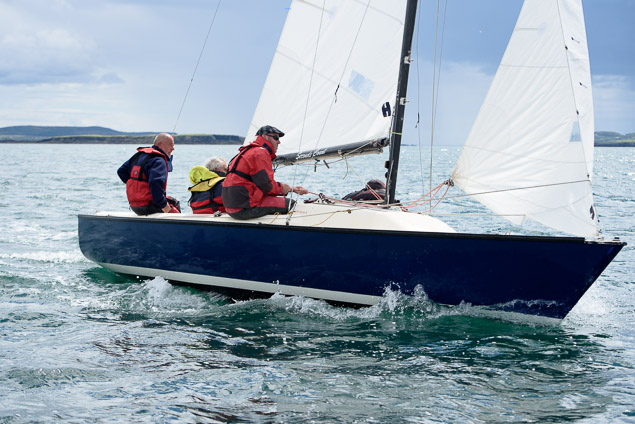 Seconds Count (Dan O'Donovan), a Sonar keelboat competitor, from Dungarvan Photo: Bob Bateman
Seconds Count (Dan O'Donovan), a Sonar keelboat competitor, from Dungarvan Photo: Bob Bateman
In class 4 it was it was a great day at the office for the Murphy family crew in “Shelly D” Who revelled in the fresh conditions to win both divisions ahead of Richard Hanley’s “Saoirse “in IRC and Simon Nelsons “Witchcraft” in Echo.
In White sail 1 Dennis Murphy’s finished off a fantastic week by taking the overall trophies in both IRC and Echo with his family crew in “Nieulargo”, while in White Sail 2 Andrew Mackey’s “Lornadrew” comfortably won the overall despite coming home second to Debroah Crowley’s “La Perie Noir” in the final race. At the award presentation, the Pearson trophy was awarded to Oonagh Buckley for her work in promoting Calves Week for many years.
Today's Fastnet race turns into a victory lap for the new Calves Week champ. A forecast of fresher winds has required some contingency planning for what is now Calves Week’s big finale, but after a dominant display that matched her D2D victory in June, Paul O’Higgins’ JPK 10.80 Rockabill VI has started today’s rescheduled Fastnet Race as Schull’s newly crowned IRC1 champion.
Meanwhile, Winkie Nixon explains how the winner of the other Fastnet Race literally came out of nowhere (don’t miss his Sailing on Saturday blog to find out if Irish sail students claim any RORC silverware tonight), Greystones GP14 pair MacCarthy & Thompson have it all to do on the final day of the British Nationals, and we have class-by-class results from last night’s DBSC action.
Sign up to our enews here
Following the postponement of Calves Week's scheduled Fastnet race, Thursday's racing took place, with the start line off the mouth of Schull harbour in West Cork in a building westerly breeze which eventually reached 12/14 knots. All the fleets raced through the Castle Island and Long Island sounds, with the larger fleets making multiple circuits.
In class 1 IRC Paul O Higgins continued his domination of the fleet, with a victory which ensures that “Rockabill”1V has won the class overall, before any discard, while Conor Doyle’s “Freya “took second on the day. In Echo it was a second consecutive win for Gabby Hogan’s “Growler” ahead of Andrew Craig’s “Chimaera”.
In class 2 “Bad Company” sailed a great race to win both divisions ahead of Fergus Coughlan’s “Jedi “in IRC and Kevin Doyle’s “Jamaro” from Cobh S.C in Echo.
In Class 3 the “Muskateer”crew from Cobh S.C had another excellent outing, to win in both IRC and Echo from David Buckley’s “Boojum” and Diarmuid Dineen’s “Growler”.
In class 4 Echo it was a first win of the series for Kevin Murray and his local crew on “Dovita of Colla” while the Murphy family on “Shelly D” had a first in IRC and second in Echo.
In the White sail class Sean O Riordan's “Y Dream” sailed to victory in IRC ahead of Denis Murphy’s “Nieulargo”,while in Echo it was local Schull boat “Quinsea” with Barry Quinlan on the helm who took the trophy ahead of Tom O Mahoney’s “Loch Greine, while in White sail 2 the honours went to Don Buckley’s “Zeezwan” from Paul Taylors “Sea Psalm”.
With much fresher weather forecasted for today's Fastnet race, a contingency plan has been put in place which may see only the larger boats attempting to round the rock, while the remaining fleets enjoy the relative comfort of an inshore course.
Paul O'Higgins 'Rockabill VI' Continues to Dominate at Calves Week
Calves Week OD Neill Prenderville certainly got his fleet into the feelgood mood,when he requested over the VHF that all competitors smile for the RTE camera crew covering the event prior to the start of the second race of the series in Schull, West Cork yesterday.
With the northerly wind prevailing for the second day, the various courses took all the fleet through Long Island sound and around Goat Island before round various marks in Roaring water Bay.
In class 1 IRC Paul O'Higgins 'Rockabill VI' continues to dominate the fleet with another clear victory while in Echo is was Gabby Hogan’s “Growler ”who took the trophy in a fleet where event sponsor Frank Whelan was forced to retire following an incident with Leslie Parnell’s “Black Velvet”.
In class 2 Fergus Coughlans “Jedi” had a clean sweep in both IRC and Echo ahead of “Bad Company” from the Royal Cork and Henry Hogs “Lisador” from the Garrykennedy Sailing Club.
In class 3 IRC, Dungarvan boat “Seconds Count” had a tight victory over “Muskateer” from Cobh, who also had to settle for second in Echo from Richard Lords “Blue Peregrine”.
Class 4 IRC was won by Richard Hanley’s “Saoirse” from KInsale, while Simon Nelsons “Witchcraft “was victorious in Echo.
White sail 1 was dominated by Aidan Heffernan’s “Indulgence”, with victory in both divisions, while Andrew Mackey’s “Lornadrew” won White Sail 2.
At a crowded presentation on Schull Main Street, Commodore Pat Maher announced that the traditional Fastnet race was postponed until Friday due to the light weather conditions forecasted for Thursday.
Calves Week Photo Gallery Day One Here!
Calves Week 2017 Regatta kicked off today in West Cork and Bob Bateman captured the action for Afloat.ie in the photo gallery below.
The opening day started out clear and bright with a light northerly wind, forcing OD Niall Prendeville to lay his start line off the Calve Islands with a windward mark off the entrance to Schull harbour. The fickle wind caused problems for most classes with a period of rain adding to the misery at times .However as the front passed through the fleet of close to sixty boats finished in Schull harbour in glorious sunshine with a freshening breeze.

Class 0/1 had the longest course of the day; taking in three rounding’s of the Calves; however a protest over a mark on the course resulted in their presentation being put on hold, pending a protest hearing.
In class two IRC, the Royal Cork's “ Bad Company” revelled in the variable conditions to take first place ahead of Flor O Riordans “ 3 Cheers”, while the Echo trophy went to Fergus Coughlan’s” Jedi “ahead of Derry Nash in Catalpa.
Class three proved very fruitful for” Musketeer” from Cove Sailing Club, who won both divisions ahead of Dan Donovan’s “ Second Count “ in IRC and local Schull boat “ Sally In Stiches” sailed by the Dwyer family in echo.
Local Schull boats again dominated class 4, with the Murphy family in “Shelly D” taking prime position in both IRC and echo ahead of Kinsale's Richard Hanley sailing” Saoirse” in IRC and Simon Nelson's” Witchcraft” in echo.
The top three in White sail 1 were similar in both IRC and Echo with Denis Murphy’s “Nieulargo” taking top place ahead of Sean O Riordan in” Y Dream” and Aiden Heffernans” Indulgence”, while White sail 2 saw the prizes go to local Schull boats, with Andrew Mackey's “Lornadrew” winning ahead of Peter Moorhead's “Giggles” and Tralee Sailing Club's Paul Taylor in “ Sea Psalm”.


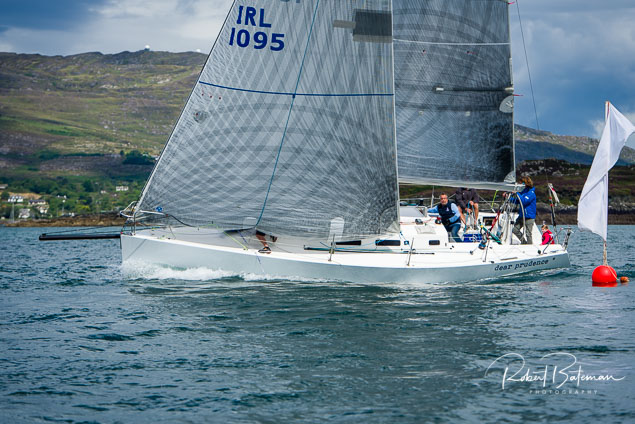
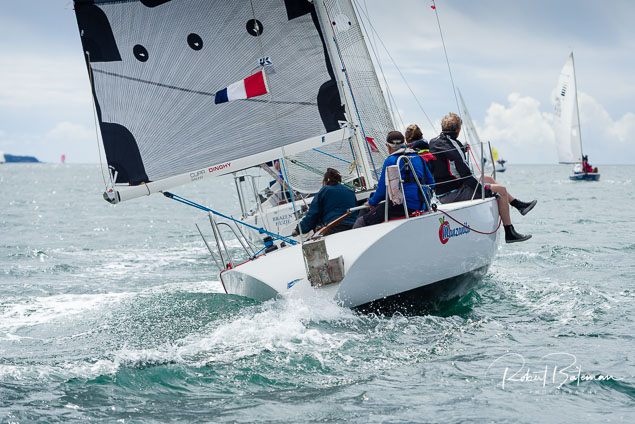
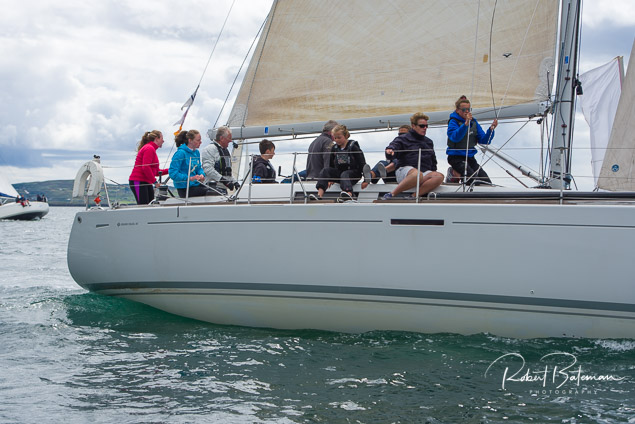
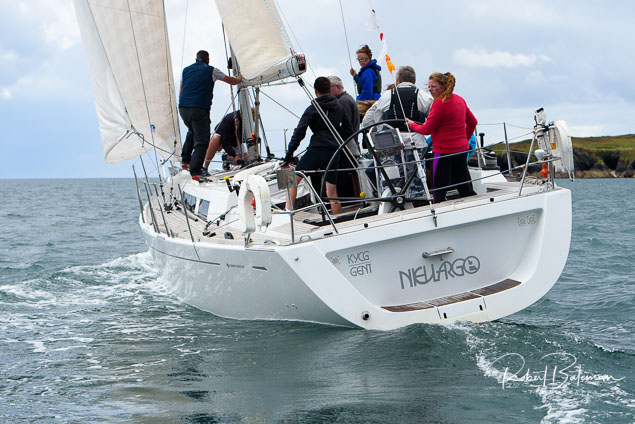
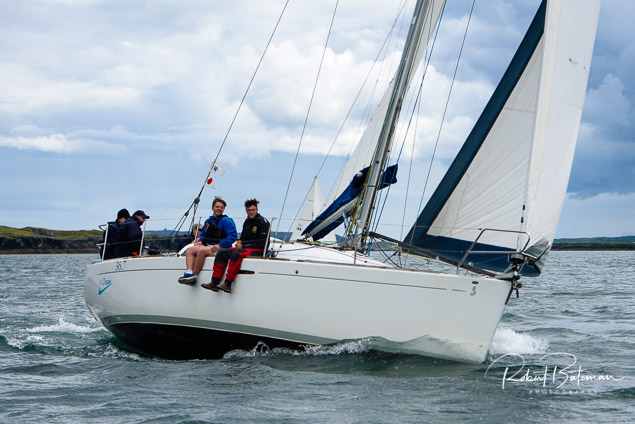
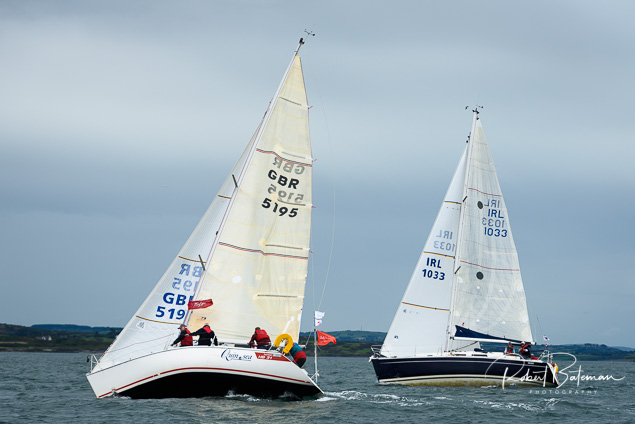
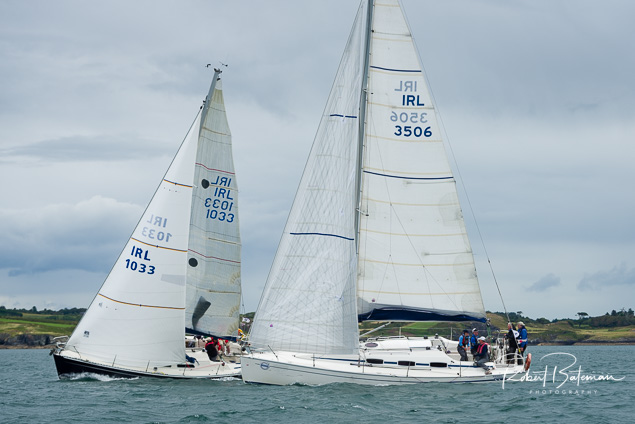

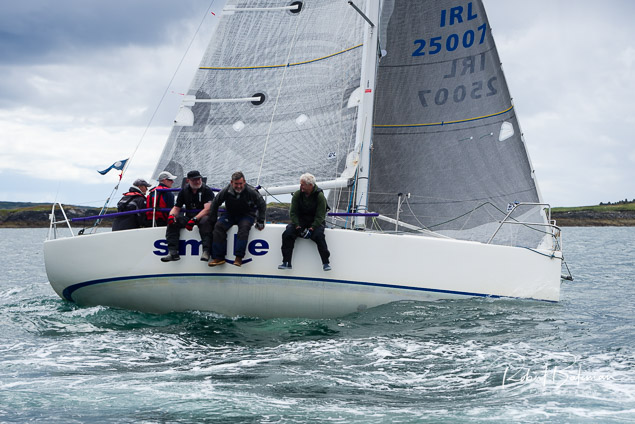

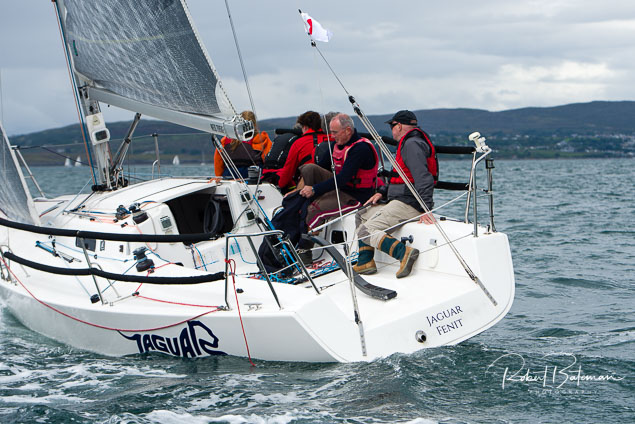
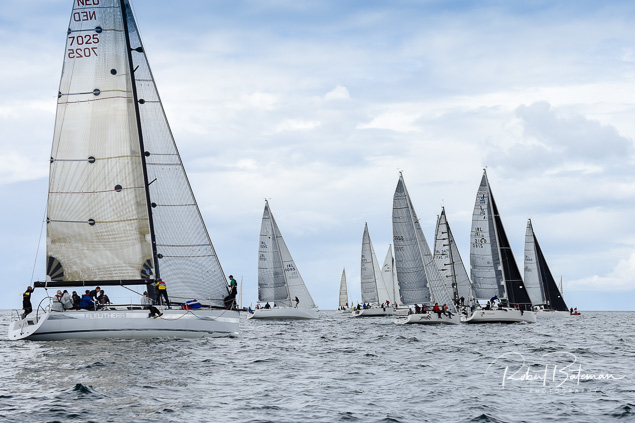
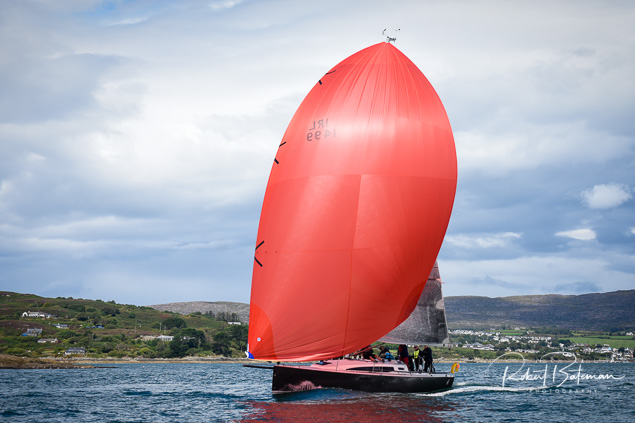
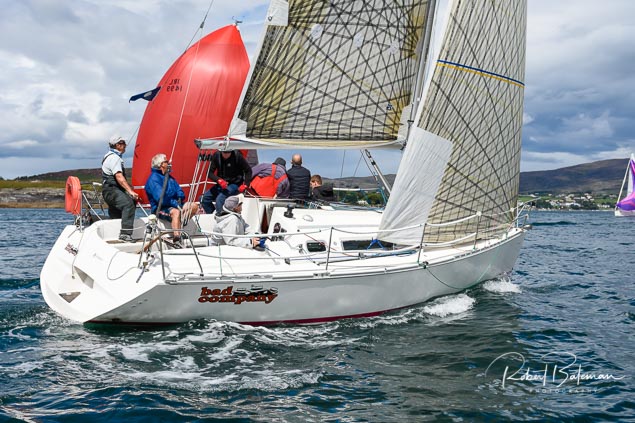
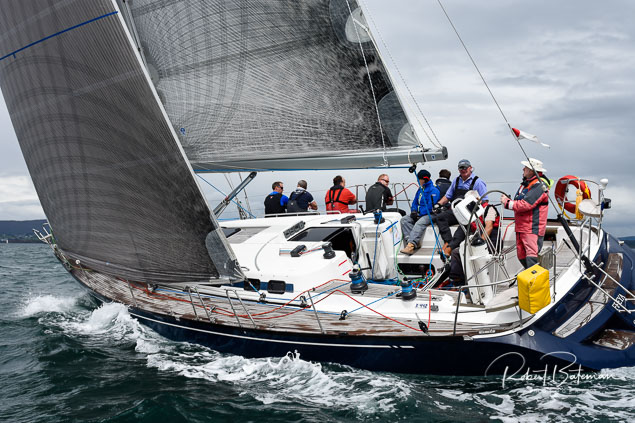
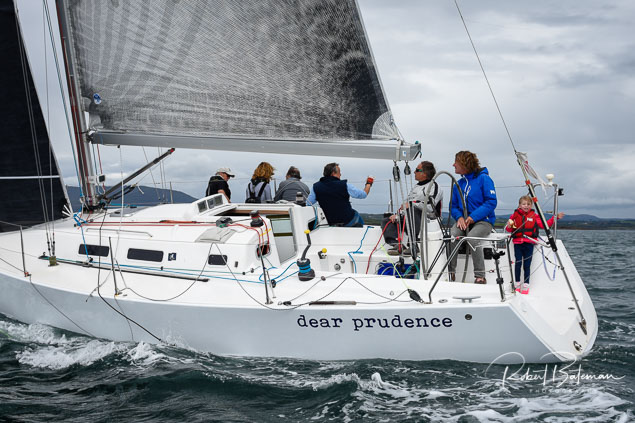
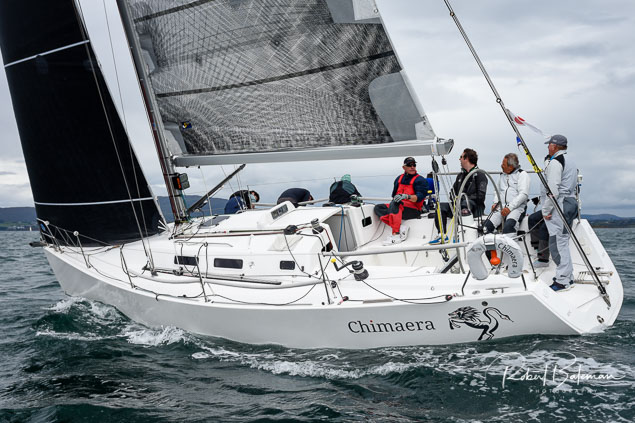
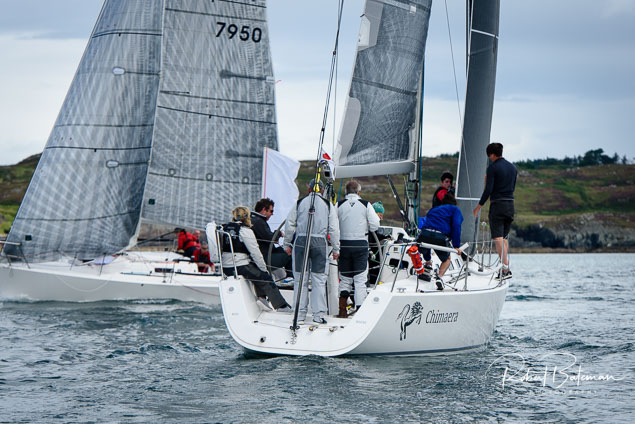
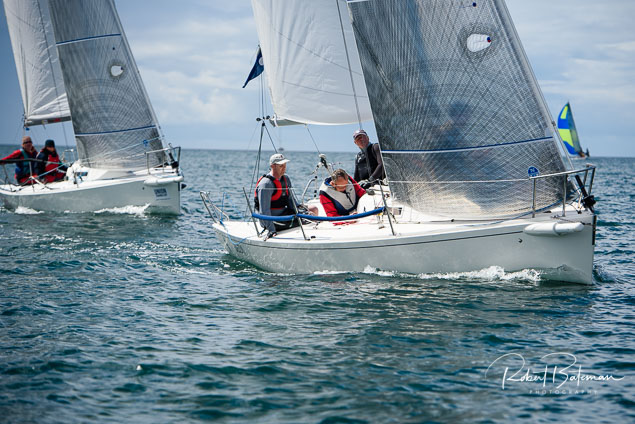
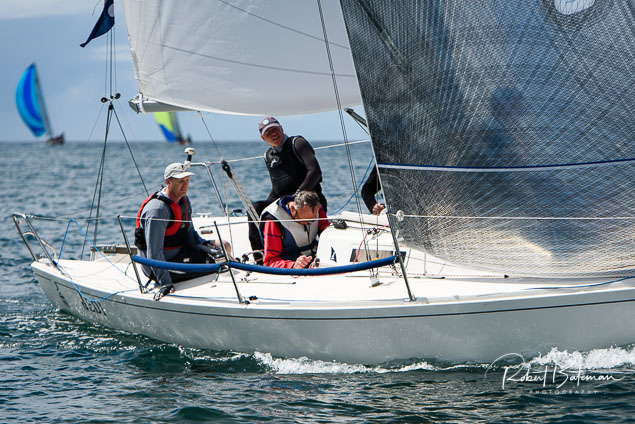
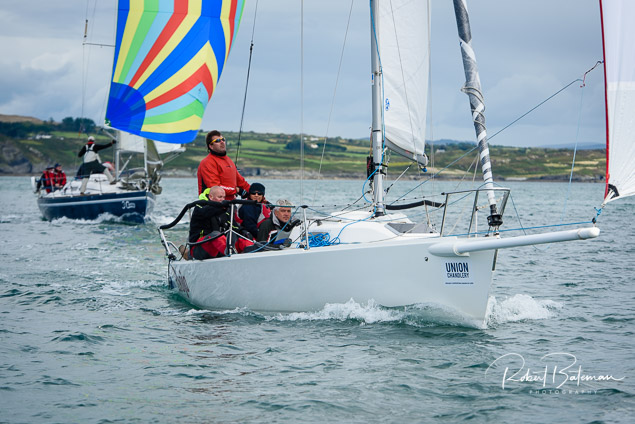
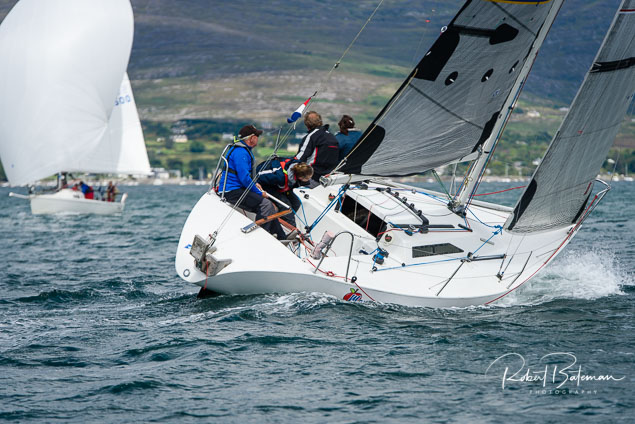

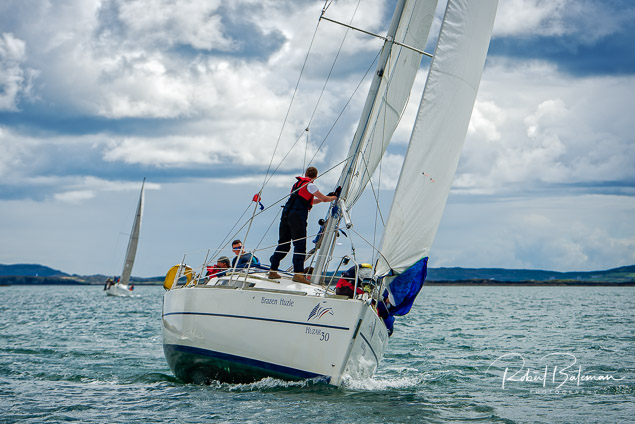
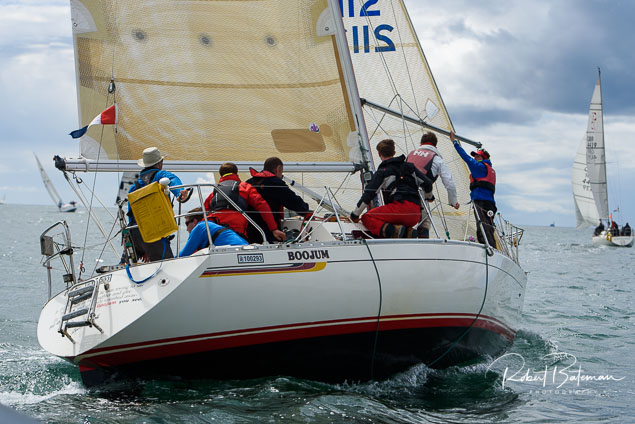
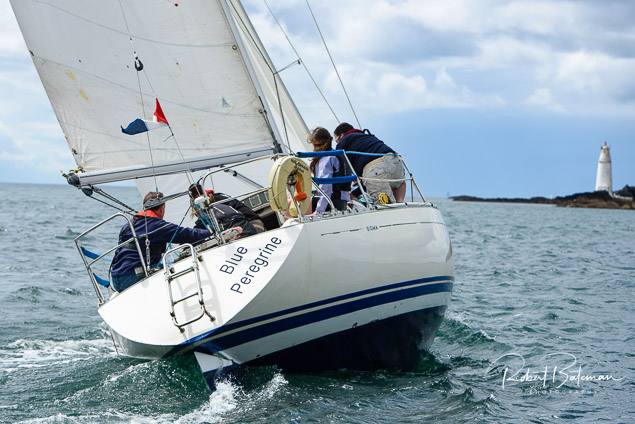
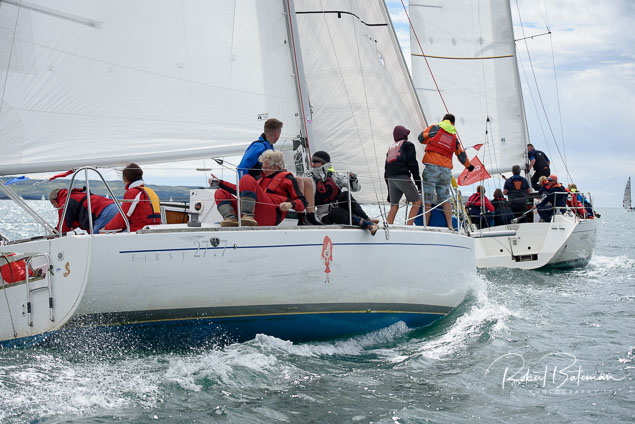
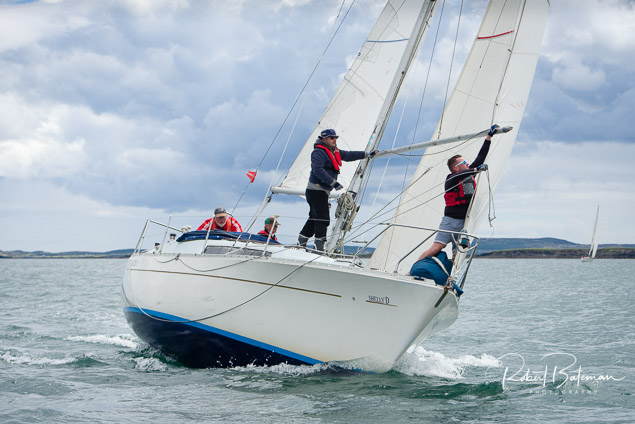
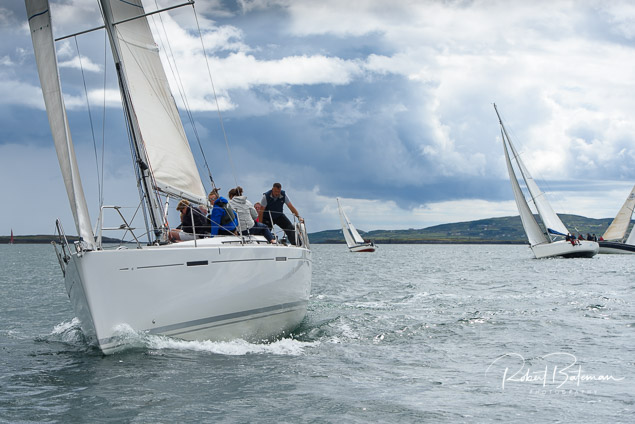

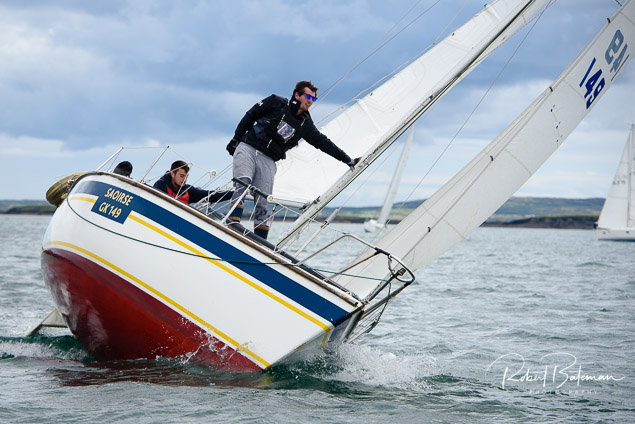
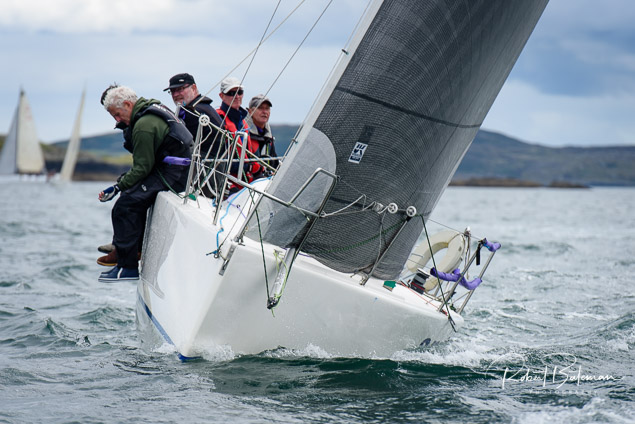
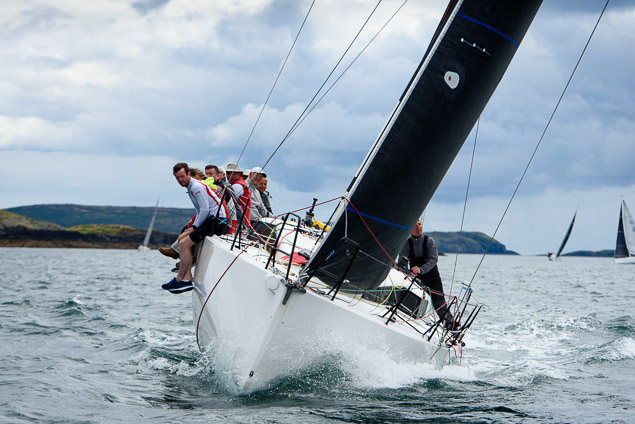
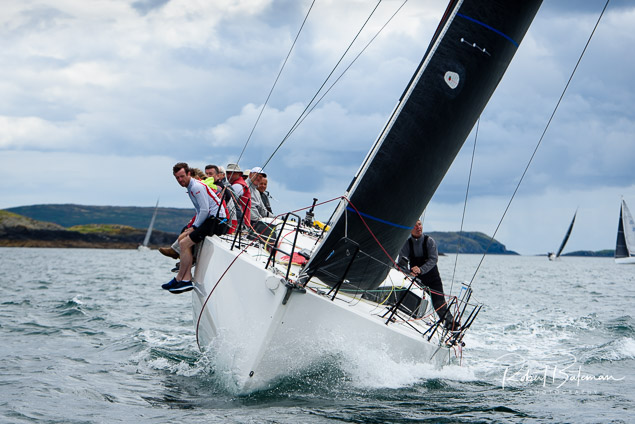


Lost Boats Led To Forming Baltimore Sailing Club
Baltimore will become a centre for sailing over the next few weeks. This August weekend the annual sailing trek to the waters around Carbery’s Hundred Isles will get underway with the annual overnight race from Crosshaven to Schull. For the next few weeks the Cork sailing fraternity will be joined by boats from the East Coast, taking in events like Calves Week, Baltimore Regatta, racing around the Fastnet and the legendary Cape Clear Regatta.
The date when the club was founded varies, according to which account you take it from. A list of Commodores in the club starts in 1952 but a letter dated 3rd August 1976, written by Frank Murphy, who was the first Secretary of the club, stated that the club was founded in the summer of 1953. However, the Minutes of a Meeting held at Salters premises in Baltimore on Saturday 28th July 1956 state that "It was unanimously felt that a Sailing Club should be formed”
On my podcast this week I talk to a former Commodore of the Club, Gerald O’Flynn, who puts that date as the one when the club was formed.
Its story, set up originally as a Summer sailing club for Cork families with second homes in the fishing village, began when some of those seasonal residents lost boats in storms while they were kept at nearby Tragumna beach.
Gerald O’Flynn tells the story of boats built and bought for £75 each in ‘old’ money; about a ‘bastard-type’ of National 18, Enterprises and Fireball dinghies used by the club, the running of National Dinghy Week and the time when the club annoyed locals by covering grass areas on the pier with concrete. It’s a fascinating story about a club with a strong family emphasis which he told me in its modern premises which these days operates for a wider period than just Summer.
Listen to the PODCAST here:
• Tom MacSweeney presents THIS ISLAND NATION radio programme on local stations around Ireland.
60 Boats Expected for Calves Week at Schull Harbour Sailing Club, 30 Entries Now Confirmed
Calves Week …. A fun event with an underlying level of quite serious racing.” WM Nixon's recent description of Calves Week describes very precisely what the organisers, Schull Harbour Sailing Club aim for every year. Club commodore Pat Maher said that each year they get more boats returning with family crew to combine a summer vacation with spectacular sailing through Carbary’s 100 isles.
This year’s event will feature racing for six classes, with the ever-growing white sail class split into two fleets, with all south coast boats also competing in the Scora League.
 Above and below: Calves Week Sailing action Photos Bob Bateman
Above and below: Calves Week Sailing action Photos Bob Bateman
The traditional overnight, offshore race starts from Crosshaven on Friday August 4th While the following Monday’s Baltimore regatta will provide an opportunity for skippers and crew to familiarise themselves with Roaring Water Bay, where principle race officer, Neil Prenderville hopes to set up a variety of courses taking in the many Islands and natural marks over the following four days.
With over 30 confirmed entries having availed of the discounted early registration fee, the pressure is on to beat the 1st July cut-off date, while the overall entry is once again expected to top the 60 boat mark.


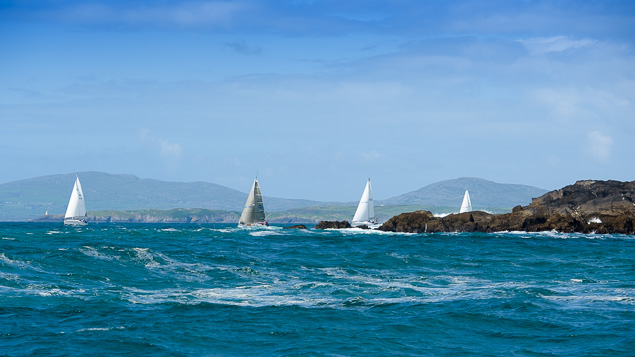

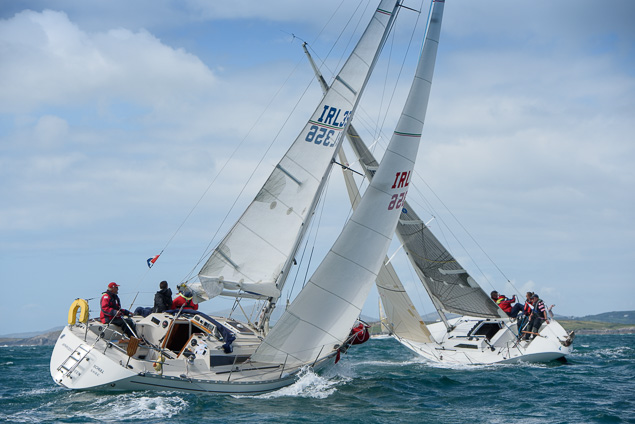
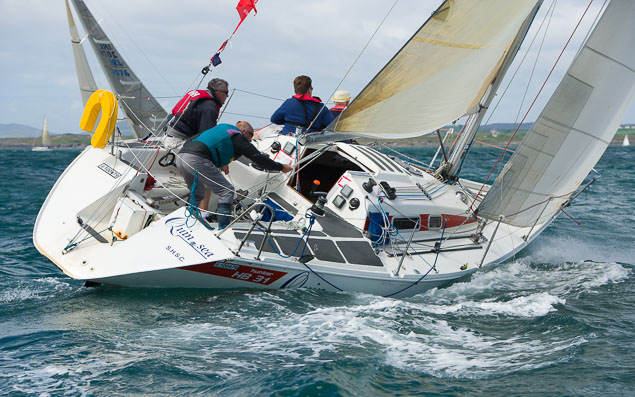
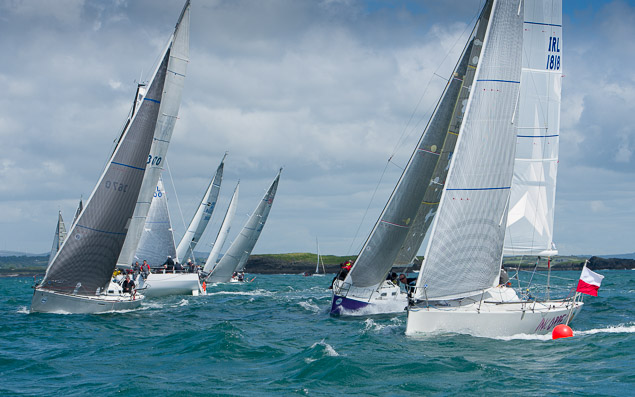
Should Dublin Bay Sailing Club Cruisers Zero & One Merge?
With just over six weeks to the Sherry Fitzgerald sponsored Dublin Bay Sailing Club season the stand–out class of the year looks like Cruisers One where a 20–boat fleet has 13 J/109s among its number. It's an impressive result that bodes well for a very competitive season but in the neighbouring big boat class should something be done to assist falling numbers in Cruisers Zero?
A story this week on Afloat.ie shows George Sisk's Wow from the Royal Irish Yacht Club is on the market. With only four other entries presently in DBSC Cruisers Zero is it now time to dispense with a Cruisers Zero class on Dublin Bay and rearrange the bands to take some lower–rated Cruisers One boats back into Cruisers Two?
Such a scenario is unlikely with the news that Sisk's WOW will be campaigned fully this season and a new Sisk forty footer is in the wings. In fact, there is also the possibility that Cruisers Zero could reach six boats this season with another new boat – yet to be announced – coming into the Bay.
There is also talk of DBSC moving the Cruisers One band lower to move some Cruisers One boats into Cruisers Zero but is that the answer?
Cruisers Zero was never that particularly strong in Dublin Bay and generally came about to ensure they got decent length races as the Cruisers One boats were considerably slower. However with the ever increasing speed of Cruisers One boats the gap in elapsed time between Cruisers Zero and Cruisers One has been reducing considerably.
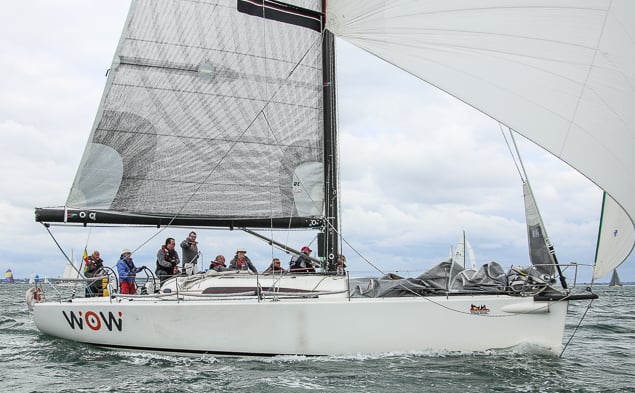 Cruisers Zero Farr 42 Wow is for sale but will be replaced with a similar sized boat Photo: Afloat.ie
Cruisers Zero Farr 42 Wow is for sale but will be replaced with a similar sized boat Photo: Afloat.ie
Cruisers One, spearheaded by the J109 designs, is clearly the strongest class in DBSC and likely in the country. Since the J109 class moved to non–overlapping jibs and consistently updated their sail wardrobes with the latest in sail technologies, they have been getting quicker and quicker.
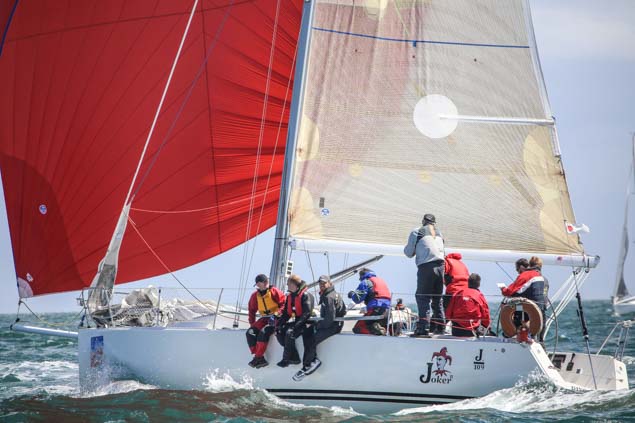 ICRA Boat of the Year, Joker 2, a J109 from the Royal Irish Yacht Club. Photo: Afloat.ie
ICRA Boat of the Year, Joker 2, a J109 from the Royal Irish Yacht Club. Photo: Afloat.ie
Three of the last four ICRA championships in Cruisers One have been won by J109’s including the last two years (Joker II) and the 2016 ICRA Boat of the Year is also a J109 (Joker II). A J109 also was a class winner in the Round Ireland race 2016 (Storm). The J109 class has pushed others in Cruisers One to up their game and now we see both the Archambault 35s Gringo and Adrenalin becoming much more competitive, along with the XP33 Bon Exemple that has gone through many changes over the last few year (symmetric to Asymmetric and back again, lowering their rating). Add to this Paul O'Higgins mighty Rockabill VI, the JPK 10.80, and Cruisers One is the strongest it has ever been.
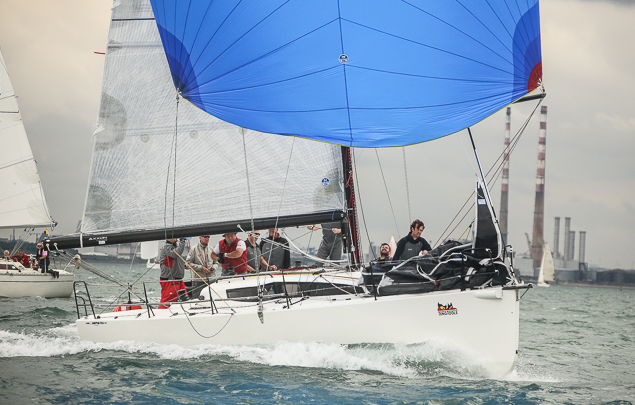 Paul O'Higgins mighty Rockabill VI, the JPK 10.80 design will be unstoppable in heavy airs. Photo: Afloat.ie
Paul O'Higgins mighty Rockabill VI, the JPK 10.80 design will be unstoppable in heavy airs. Photo: Afloat.ie
At the start of last season Tim Goodbody brought in the J109 White Mischief and two further J109’s have entered the fleet in the last six months, Andrew Algeo's Juggerknot and Andrew Craig's Chimeara. All three are seasoned campaigners and will surely drive the fleet further.
 Recent arrival – Tim Goodbody's White Mischief J109 was immediately competitive Photo: Afloat.ie
Recent arrival – Tim Goodbody's White Mischief J109 was immediately competitive Photo: Afloat.ie
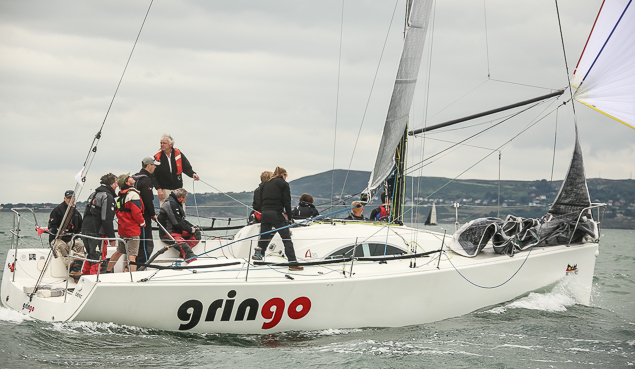 The A35 Gringo has a flatter stern and quick dead downwind. Photo: Afloat.ie
The A35 Gringo has a flatter stern and quick dead downwind. Photo: Afloat.ie
So who will be on the DBSC podiums this year in Cruisers One and also Cruisers One at ICRAs? With 13 J109’s competing surely the podium will be stacked with these 15–year–old designs? They are extremely competitive in lighter airs and can hold their own when the breeze gets up. Their only weakness is running in stronger winds where the lighter, and flatter sterned modern designs, like the A 35’s and XP 33’s can pull their poles back and go straight downwind, whereas the asymmetric J109’s have to do higher angles.
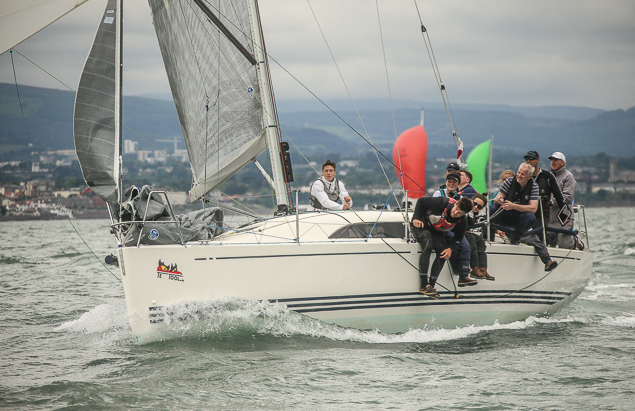 XP33 Bon Exemple – different spinnaker configurations. Photo: Afloat.ie
XP33 Bon Exemple – different spinnaker configurations. Photo: Afloat.ie
If, however, the winds stay stronger for a whole series, like ICRA's 2015, it will be very hard to beat Rockabill VI. This boat is extremely powerful and will go upwind and downwind much faster than the rest of the fleet in a breeze, even taking into account her higher handicap. However it appears she has a weakness in light airs and one day of these conditions in a series might be a problem for her.
Three in a Row for Joker II at ICRAs?
Among the J109’s the top performer from 2016, John Maybury's Joker 2 is going for three in a row at ICRA's having won in 2015 and 2016. She will not have it all her own way however as Tim Goodbody's White Mischief and Pat Kelly's Storm are always very competitive. The newly arrived Chimeara and Juggerknot might also have something to say. The A35 Gringo has shown a lot of form as has Bon Exemple. At ICRAs you will also likely be seeing the A35 Fools Gold of Rob O'Connell in contention as he has done in the last two events.
Packed Season
2017 is set to be a very interesting year for this ever strengthening class with 3 large events in Ireland for them to battle it out. The ICRA Championships in Cork Harbour in June, ten days later, Sovereigns Cup in Kinsale, and a few weeks after that Dun Laoghaire Regatta Some may also venture to Tarbert in Late May, Calves Week in Early August and Abersoch week in Late August. There are plenty of good events available and some great racing ahead. Allied to all of this a great regular racing scene in Cruisers One in the DBSC series.


























